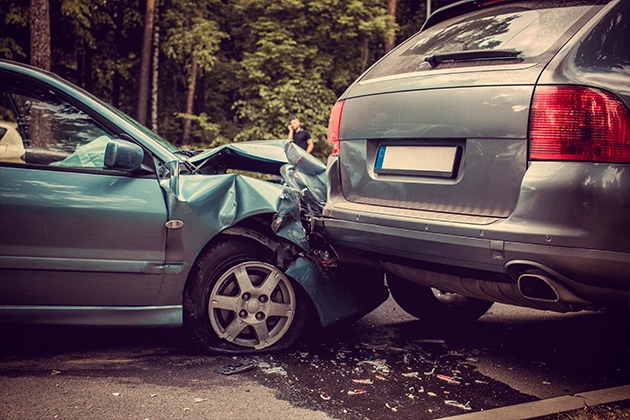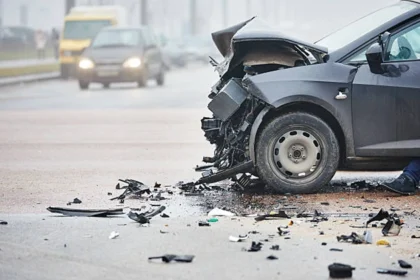For many organizations, company vehicles are an essential part of daily operations. Whether they are used for deliveries, sales calls, client visits, or employee carpools, these vehicles extend a company’s reach and enhance efficiency. However, they also carry significant legal risks. When accidents occur, questions about liability can quickly arise, potentially exposing the business to lawsuits, financial losses, and reputational harm.
For CEOs, understanding the legal landscape surrounding company vehicle accidents is critical. It ensures that risk management strategies are in place and that the organization can respond effectively if an incident occurs.
Understanding the Scope of Liability
Liability in company vehicle accidents depends on a range of factors, including who was driving, the purpose of the trip, and whether the vehicle was being used within the scope of employment. In many cases, employers can be held responsible for accidents caused by employees under the legal doctrine of “vicarious liability.” This means that if an employee is performing work duties and causes an accident, the company may share legal responsibility for damages.
However, the boundaries of this responsibility are not always clear-cut. If an employee uses a company vehicle for personal errands without authorization and gets into an accident, the company may have a stronger defense against liability. CEOs must ensure policies clearly define acceptable use of company vehicles to reduce ambiguity.
The Role of Negligence in Determining Fault
Negligence plays a central role in liability assessments. If an accident results from the company’s failure to maintain its vehicles in safe condition, the organization could be found negligent. Poor maintenance records, failure to address known mechanical issues, or inadequate driver training programs can all increase liability exposure.
Similarly, if an employee is driving recklessly or under the influence while performing company business, the legal fallout can be severe. Even with a strong safety policy, the company may still need to show it took reasonable steps to enforce compliance and prevent unsafe behavior.
At this stage, it’s also important to understand how unique scenarios, like a company vehicle crash during a company carpool, can complicate liability questions. Determining whether the driver was on official duty, the nature of the trip, and how company policies apply can significantly influence legal outcomes. CEOs should work closely with their legal teams to clarify policies for these situations and ensure they are backed by appropriate insurance coverage.
Insurance Coverage and Its Limitations
Commercial auto insurance is a fundamental safeguard for organizations that operate company vehicles. This coverage typically addresses liability for bodily injury, property damage, and sometimes legal defense costs. However, coverage limits, exclusions, and policy terms can greatly affect protection.
CEOs should regularly review insurance policies to ensure they match the scale of operations. Gaps in coverage can leave a business financially vulnerable, especially in the event of a serious accident involving multiple injuries or significant property damage.
Managing Insurance Claims
After a company vehicle accident, the claims process begins, and it can be more drawn out than many expect. The average time for a car accident claim depends on factors like the complexity of the case, severity of injuries, and disputes over fault. Extended claims can delay resolution and increase operational uncertainty, which in turn can influence budgeting and resource allocation.
Having internal procedures for gathering accident details quickly—photos, witness statements, and maintenance logs—can help speed the process and reduce the risk of disputes.
Preventative Strategies for CEOs
Mitigating liability starts well before any accident happens. Preventive measures can dramatically reduce risk and demonstrate a company’s commitment to safety.
Implementing Comprehensive Driver Policies
A clear vehicle use policy is essential. It should outline who is authorized to drive company vehicles, acceptable uses, accident reporting procedures, and the consequences of policy violations. Regular safety training can reinforce these rules and keep employees focused on safe driving habits.
Regular Vehicle Maintenance and Inspections
Routine maintenance is more than just an operational necessity, it’s a legal safeguard. Detailed service records can demonstrate that the company took reasonable measures to prevent mechanical failures. Regular inspections help identify and resolve potential hazards before they lead to accidents.
Driver Training and Monitoring
Investing in driver safety training can significantly reduce accident rates. Some organizations also use telematics systems to monitor driving behaviors, such as speeding or harsh braking. Data from these systems can guide targeted coaching and policy adjustments.
Responding to an Incident
When a company vehicle accident occurs, the organization’s response can influence legal and reputational outcomes. Ensure that injured parties receive prompt medical attention, law enforcement is contacted, and evidence is preserved. Employees should know whom to notify internally, and incident details should be documented immediately.
CEOs should also coordinate with legal counsel early in the process to ensure that communications with insurers and other parties are handled correctly.
Legal and Reputational Considerations
In addition to potential legal liability, vehicle accidents can create public relations challenges. A serious accident involving a company-branded vehicle can attract media attention and harm the company’s public image. Managing the narrative, without admitting fault, can help mitigate long-term damage.
Proactive communication strategies, prepared in advance, allow for timely and measured responses. These should always be aligned with legal advice to prevent unintentional liability.
Special Issues with Carpools and Ridesharing
With the rise of flexible transportation options, liability can become more complex. For example, if a company encourages employees to carpool in a company-owned or leased vehicle, the boundaries of liability may not be straightforward. If an accident occurs, determining whether it was a business-related trip or a personal arrangement can be a critical factor in legal proceedings.
Coordinating with Legal Counsel
For serious incidents, having experienced legal representation is essential. Attorneys can guide the investigation, protect privileged communications, and assist in settlement negotiations. Established relationships with legal partners ensure the company can respond swiftly and effectively.
The CEO’s Role in Building a Safety Culture
Ultimately, reducing the risk of liability for company vehicle accidents requires leadership from the top. CEOs shape corporate culture, and when they emphasize safety, through policies, training, and investments in vehicle upkeep, it sets a standard across the organization.
By embedding safety into corporate values, companies can improve compliance, reduce accident rates, and protect both employees and the business from the potentially costly consequences of vehicle accidents.










